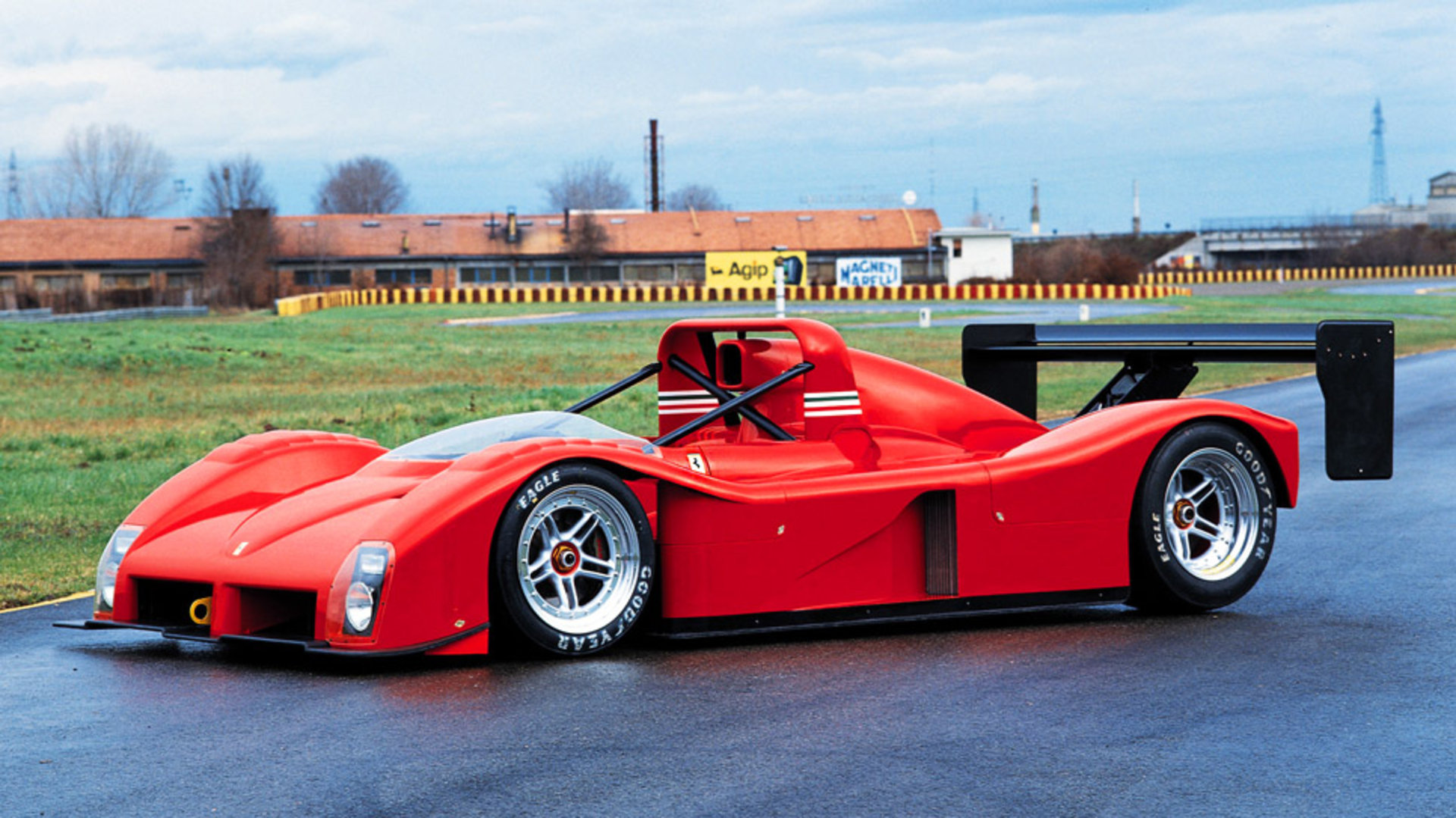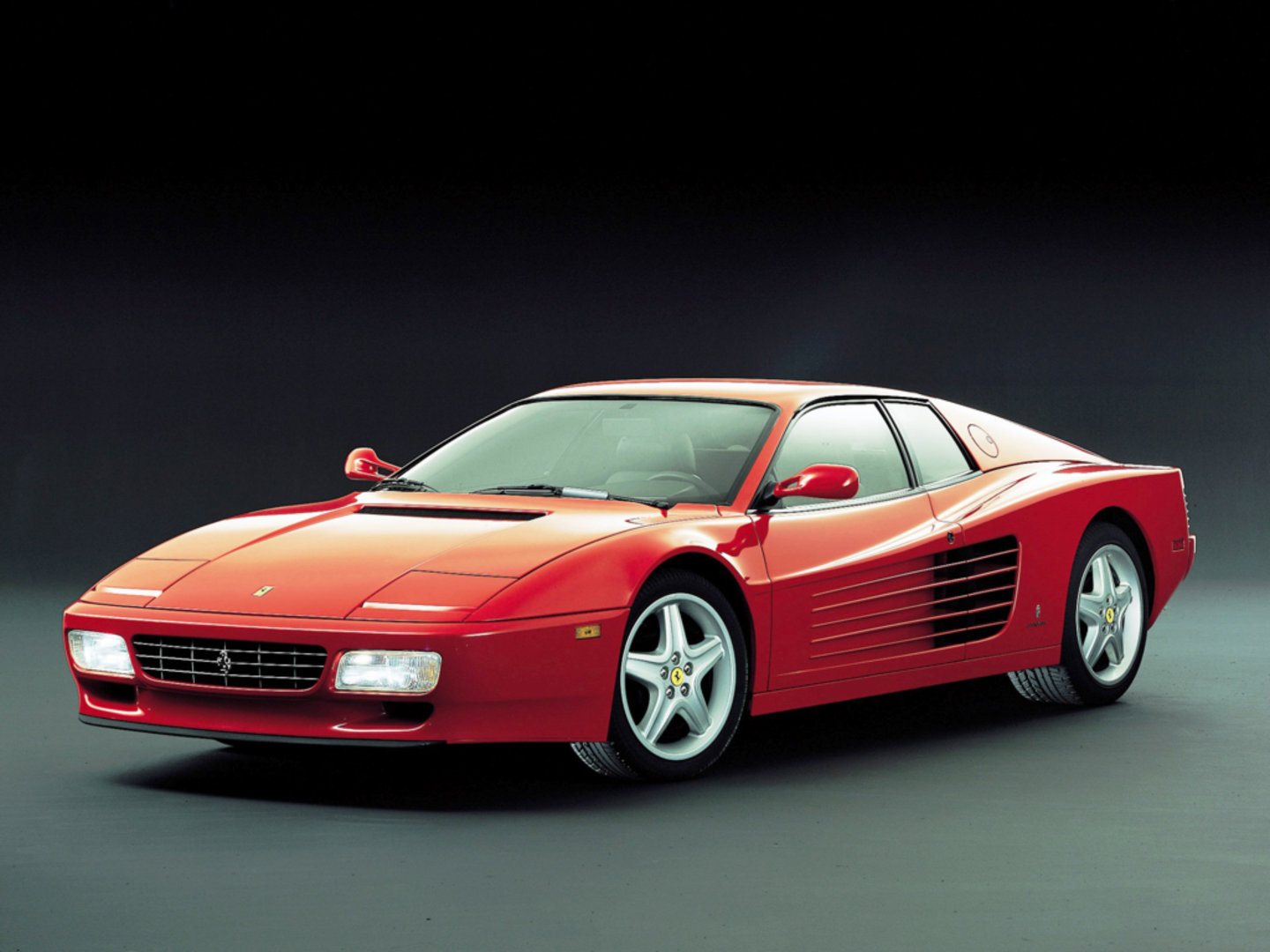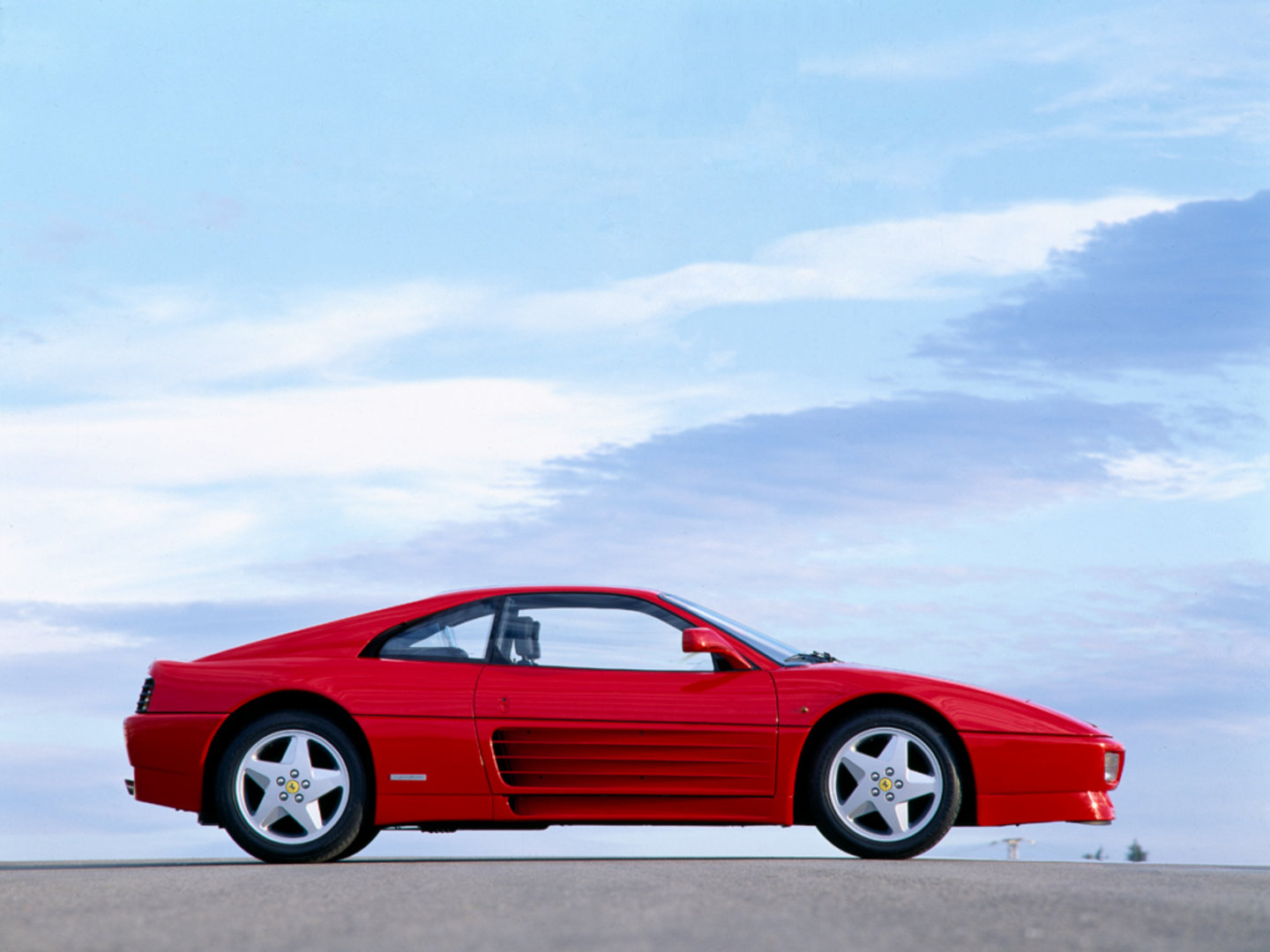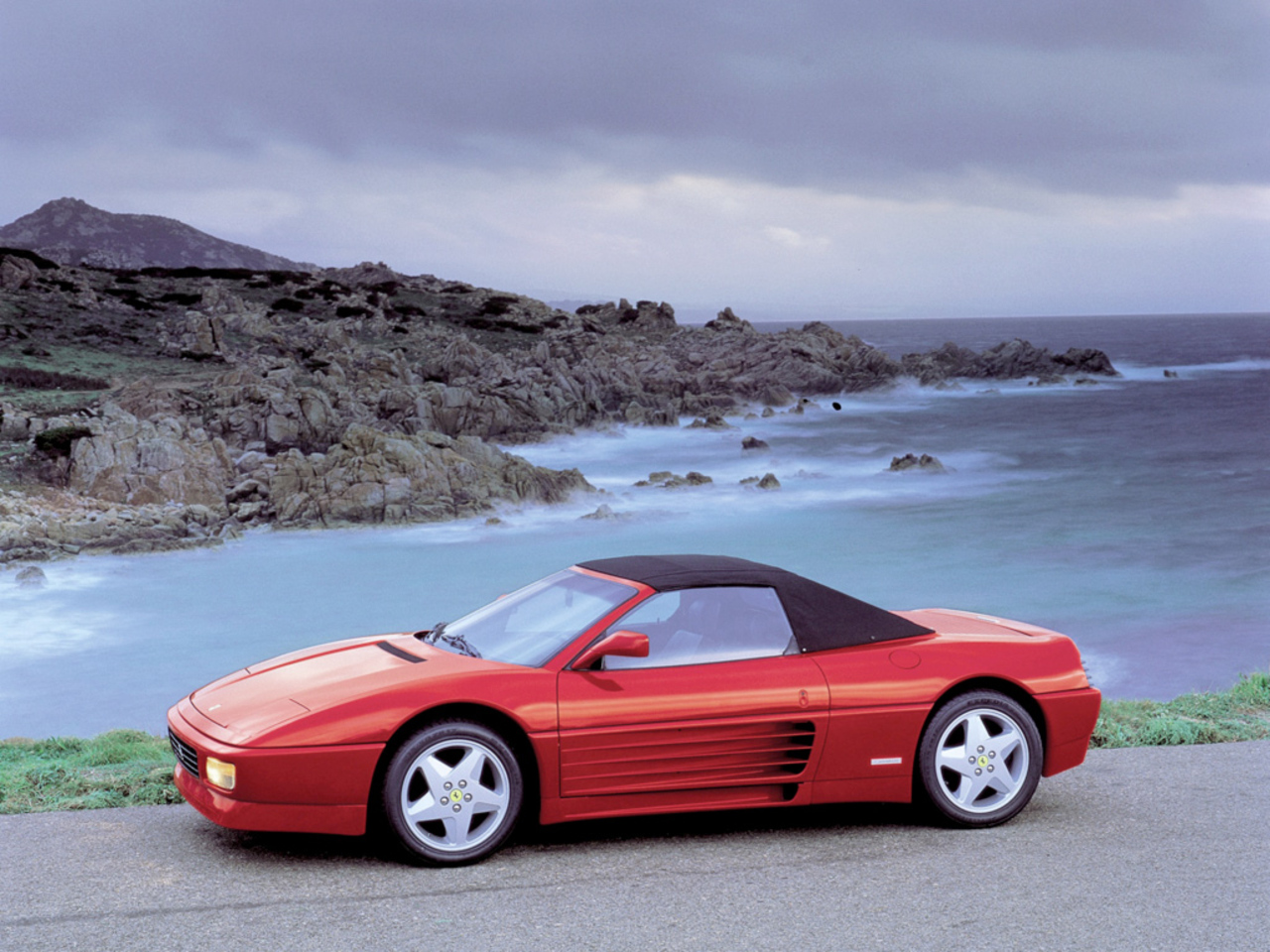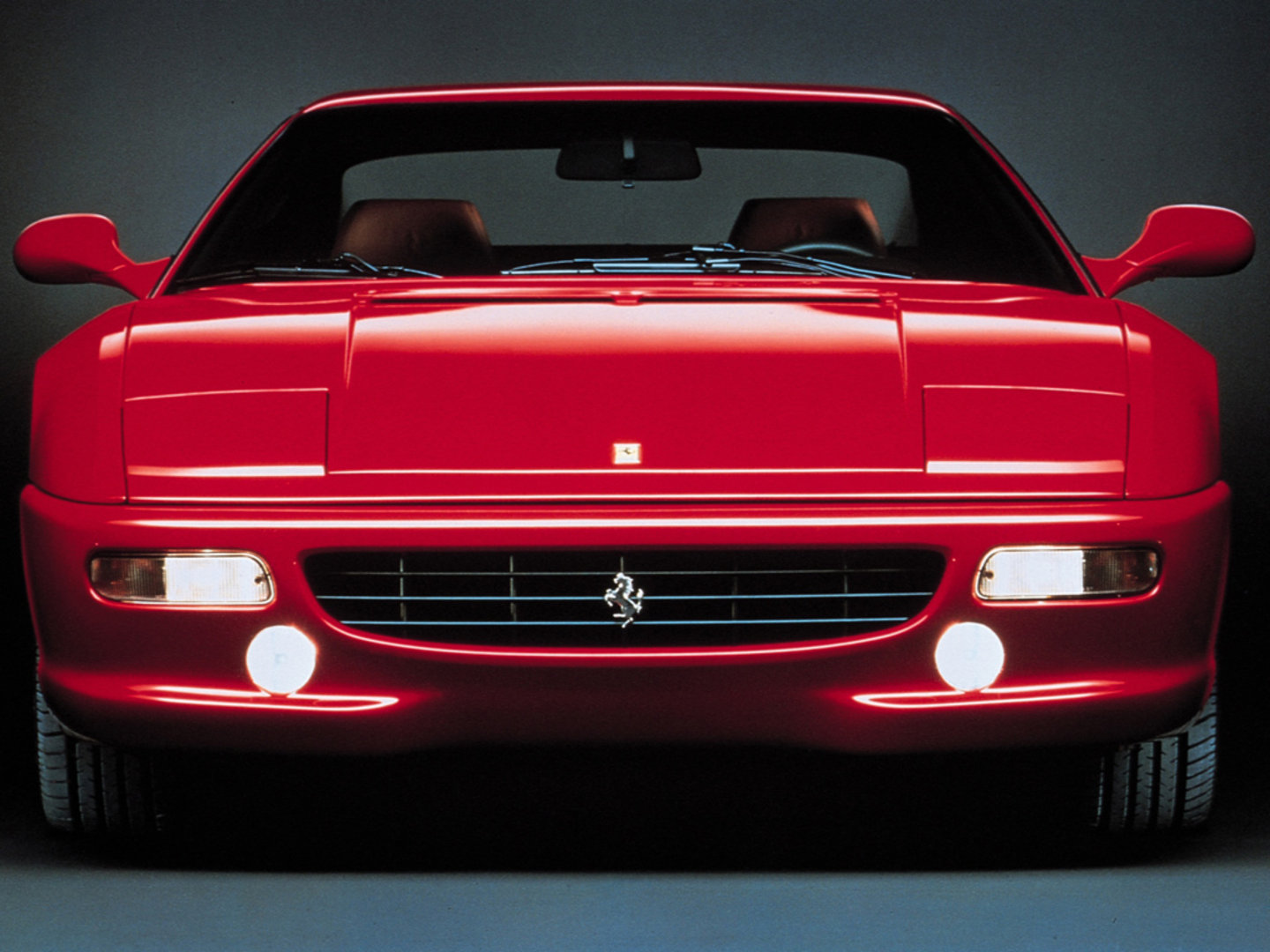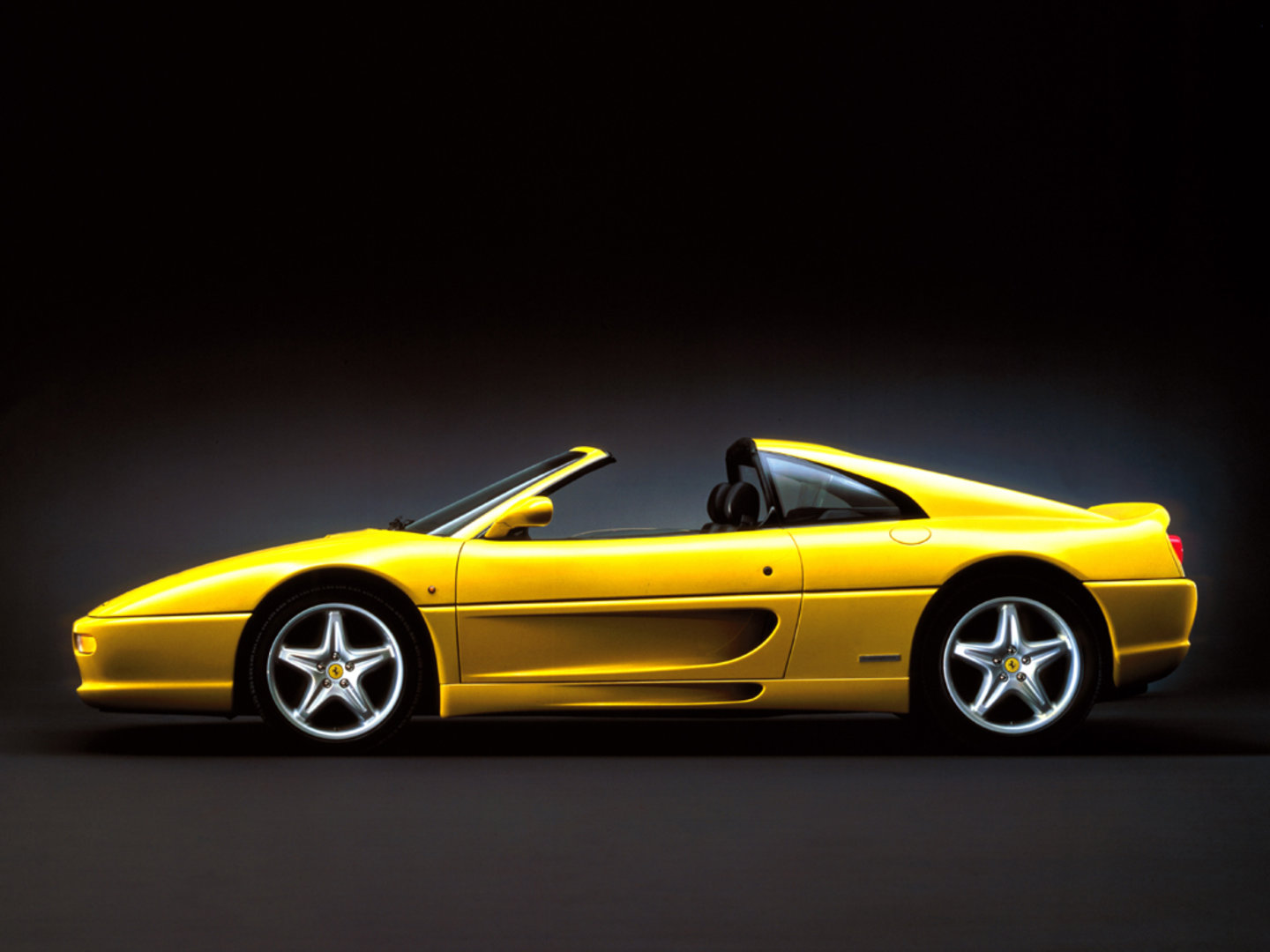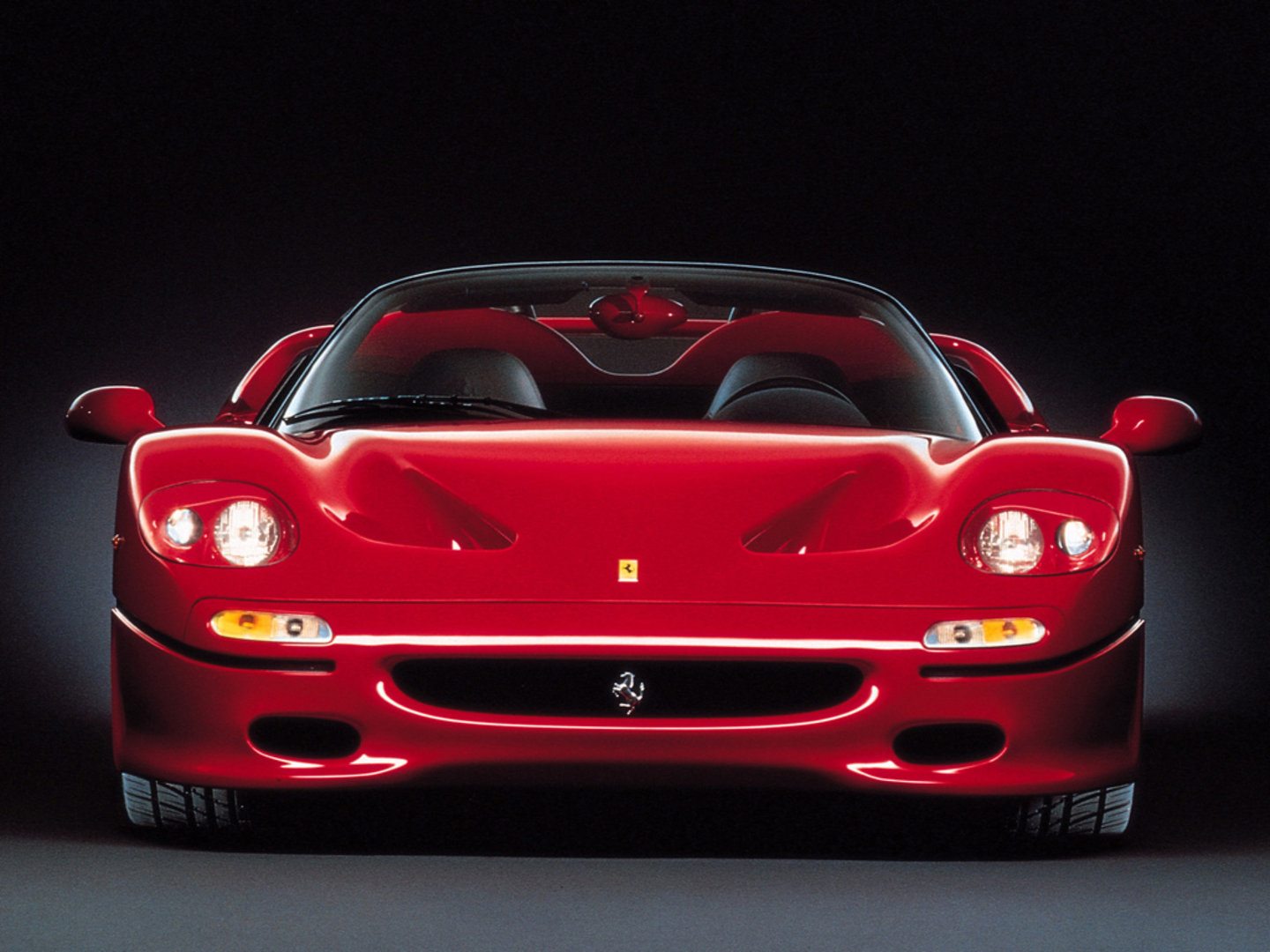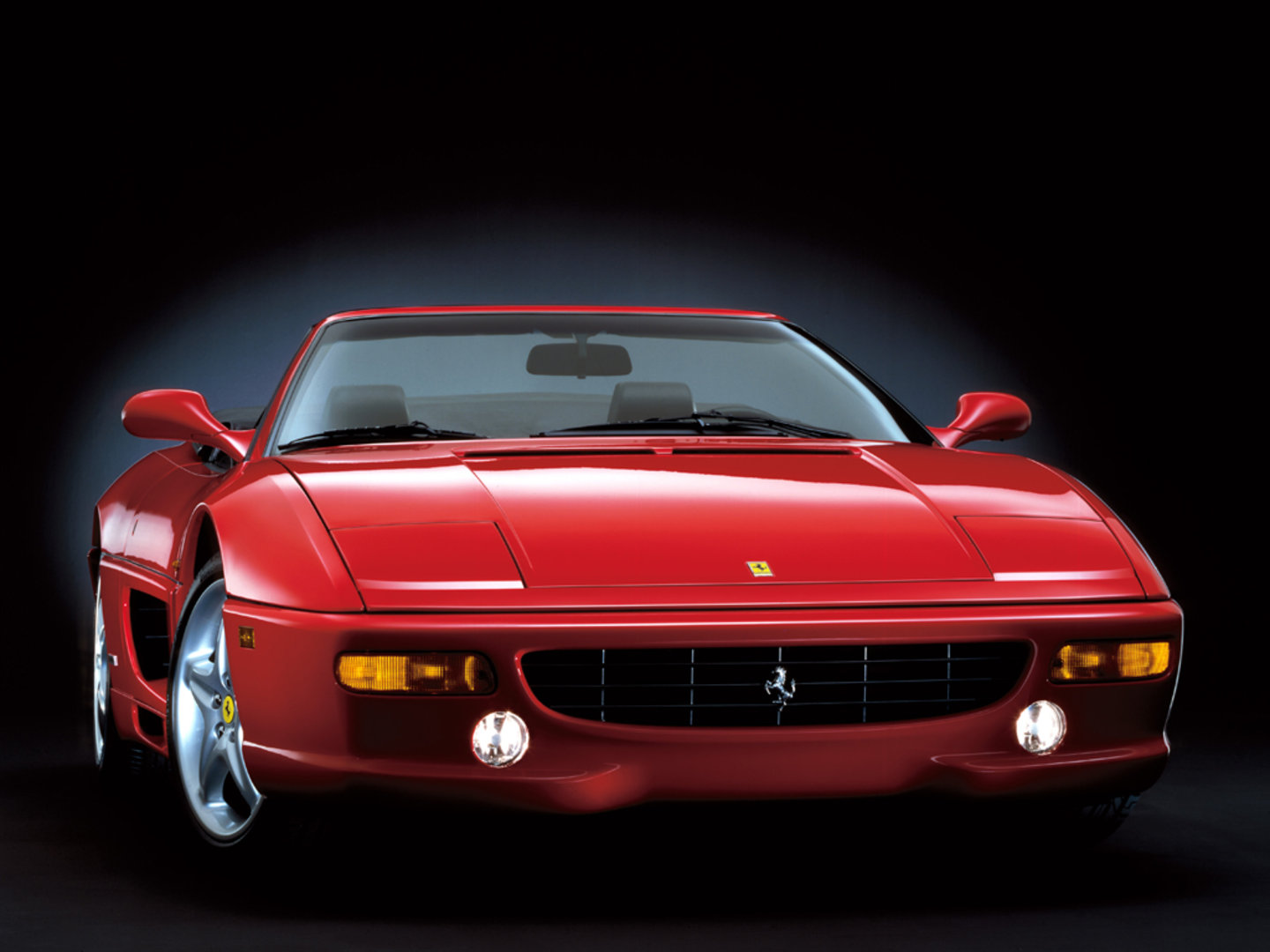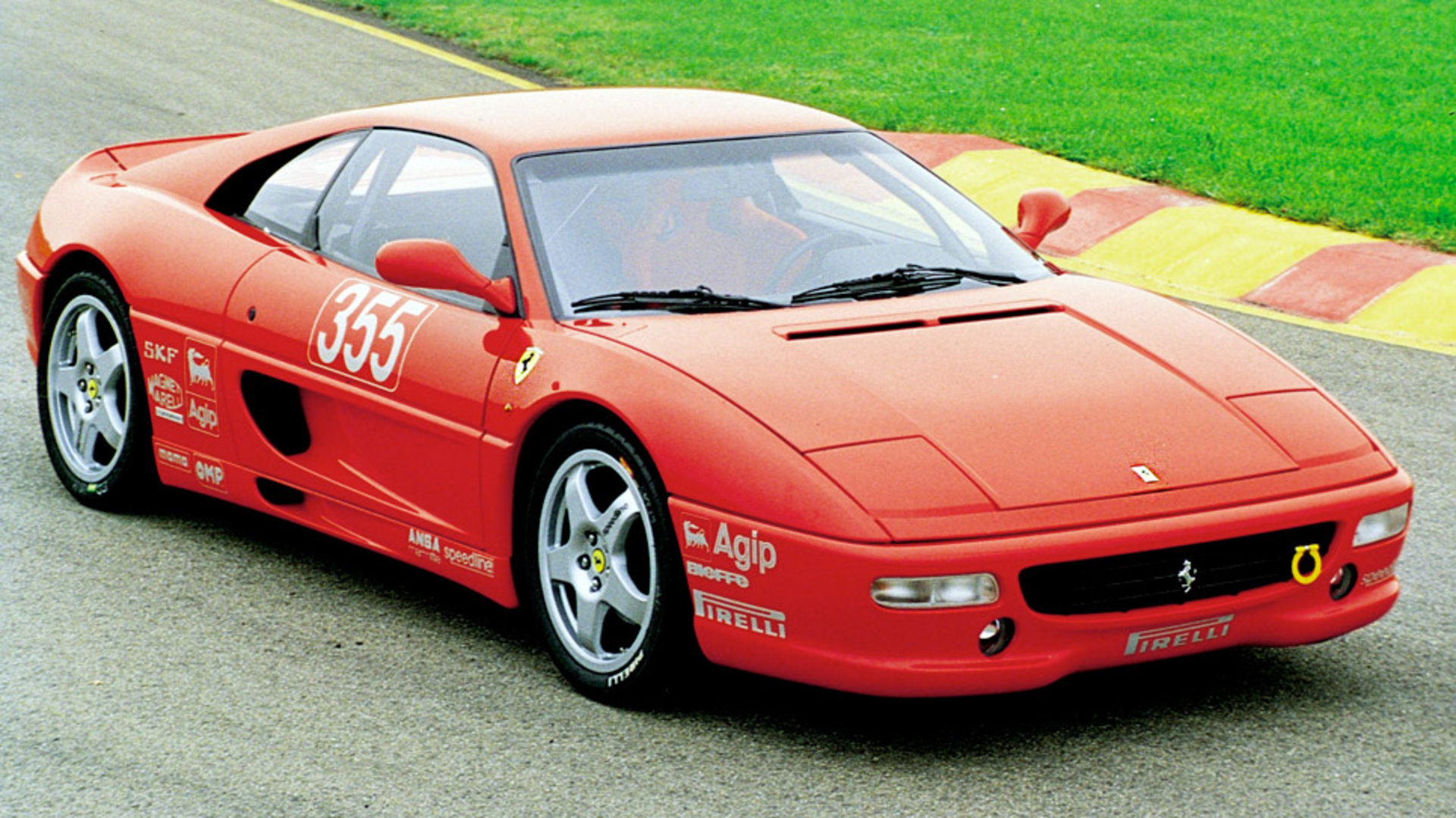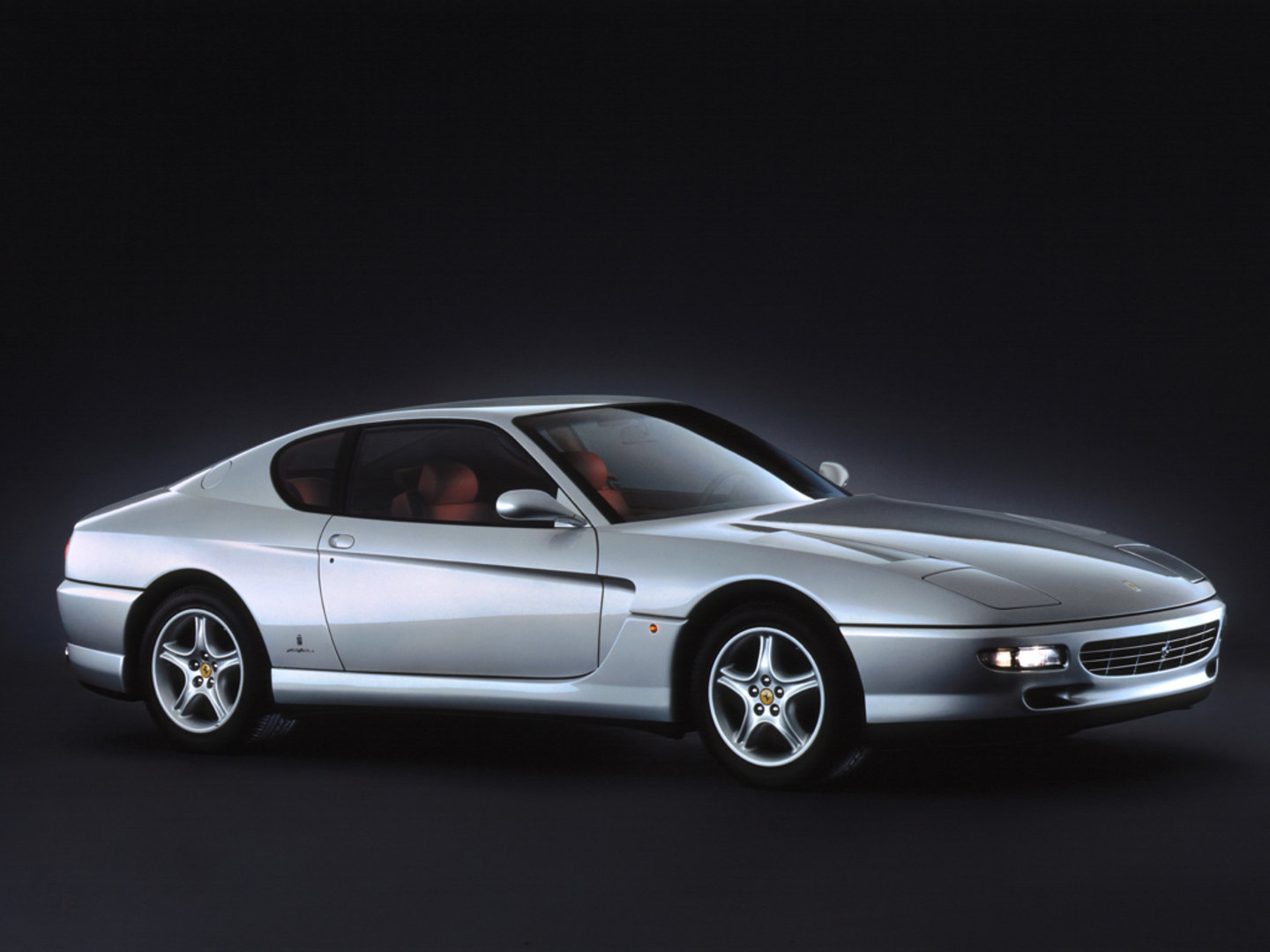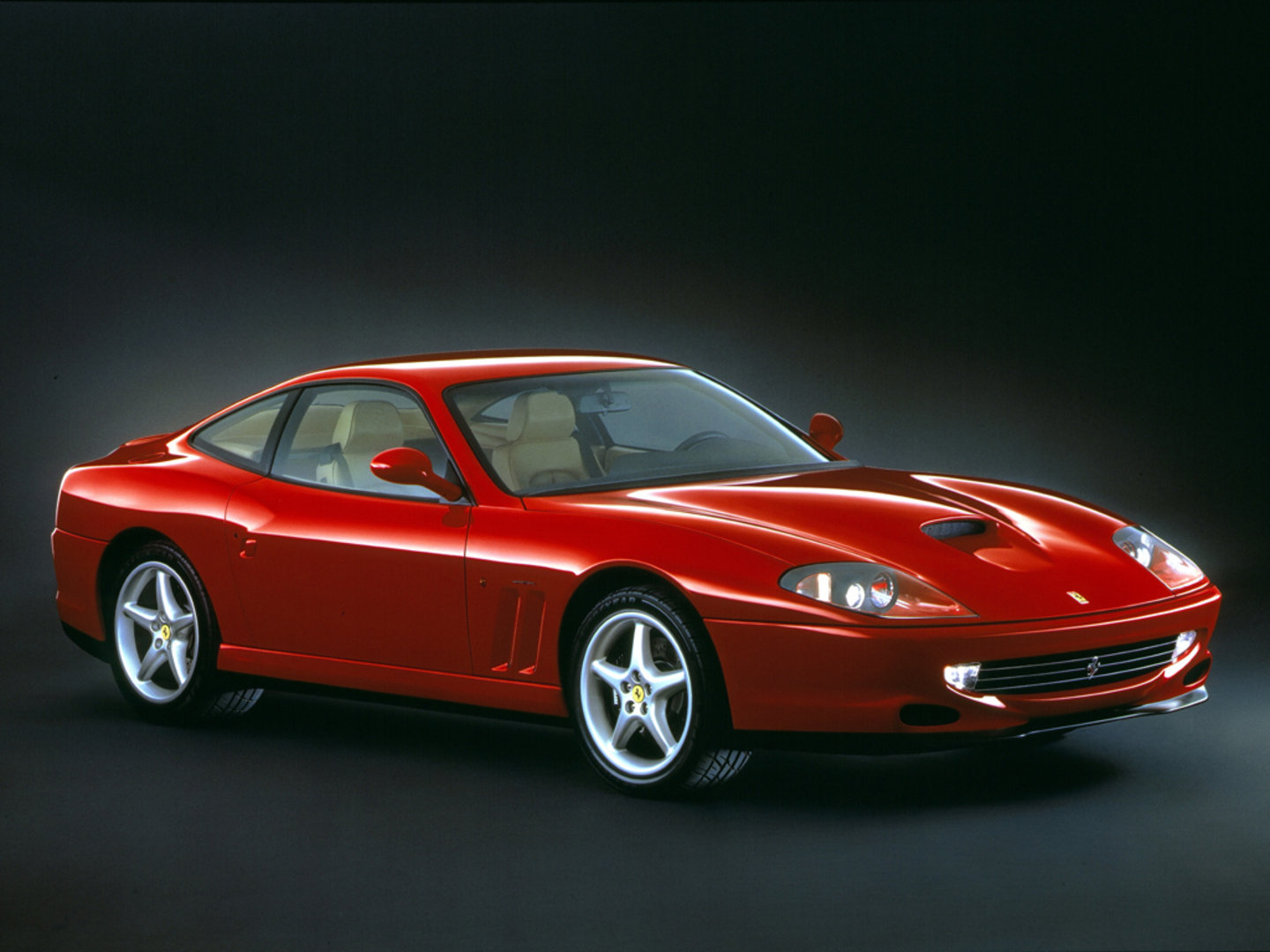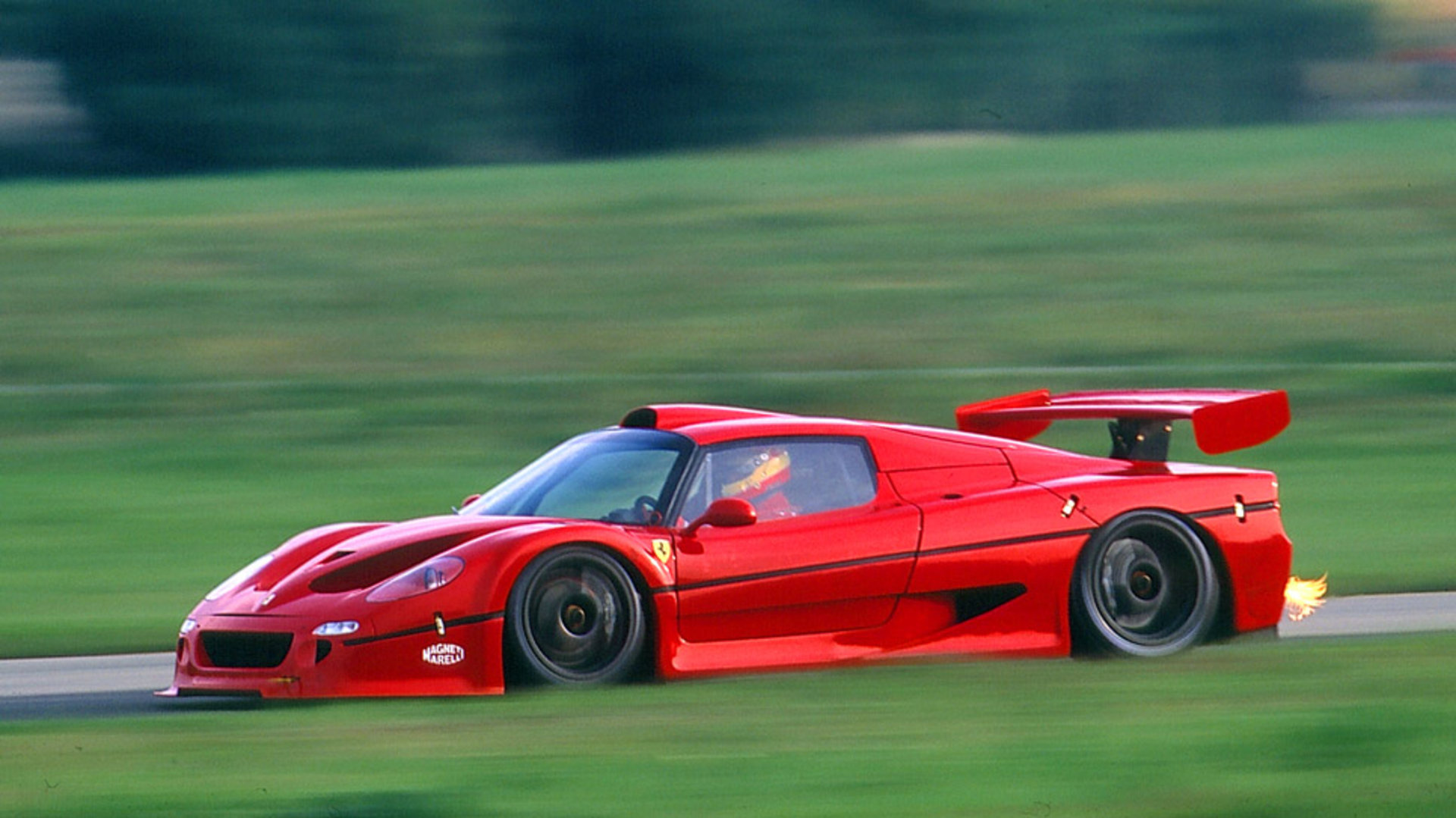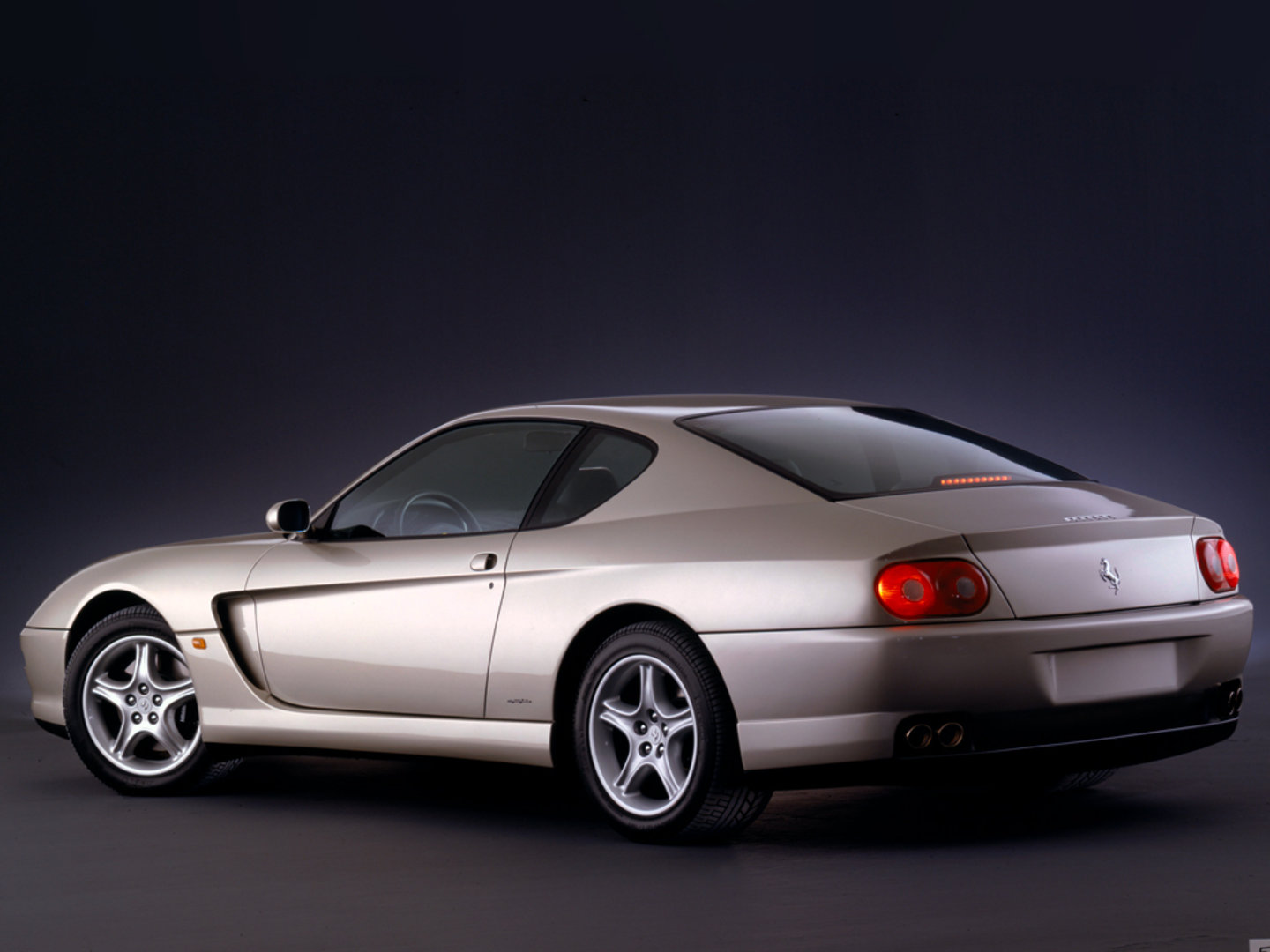The 90s were a successful decade in Ferrari’s racing history. It was the time of Michael Schumacher, the ultimate champion, and the overall domination of the Scuderia Ferrari.
Ferrari 512 TR (1991)
The 512 TR was the evolution of the Testarossa and production started in 1991. The interior was redesigned to increase comfort and ergonomics and the exterior facelift was designed to improve aerodynamics.
The 12-cylinder boxer was subject to a series of modifications, one of which was to lower the chassis to lower the car’s centre of gravity and thus improve road-holding and reduce the roll axis. Power was upped by 38 bhp and the 12-cylinder’s already generous torque was also increased.
Ferrari 456 GT (1992)
The 456 GT took the luxury 2+2 coupé theme to new heights and saw Ferrari return to the front-engine concept for the first time since the 1968 365 GTB4. The all-new 65° V12 provided unprecedented flexibility and power.
The aluminium bodywork designed by Pininfarina was aerodynamic, efficient and indisputably elegant, unequivocally conveying the model’s identity as a Ferrari. Cockpit ergonomics meant passengers enjoyed high levels of comfort: the 456 GT set the standard for its class.
Ferrari 348 GTB (1993)
Modified from the 348 TB, the 348 GTB was a two-seater berlinetta with dynamic performance characteristics worthy of the marque’s highest traditions. Its sports orientation was best expressed on the track, as proven by the 348 Challenge, which saw this car race on circuits in Europe and the US. Its styling was harmonious and aerodynamically efficient, and the mid-mounted V8 engine ensured perfect weight distribution and class-beating power.
This was a two-seater berlinetta with all of the characteristics drivers had come to expect from Maranello. Although extremely versatile to drive, the 348 GTB really only came into its own on the track thanks to its extreme sportiness, a fact demonstrated amply in the 348 Challenge in Europe and the USA. It was styled by Pininfarina.
Ferrari 348 GTS (1993)
This two-seater convertible offered the same specifications as the 348 GTB, with the choice of open or closed-top motoring and a layout that had by now become a Ferrari classic: as on the outgoing TS, the hard top was stowed away in the space behind the seats.
Virtually identical to the 348 GTB in terms of its engineering, the 348 GTS was a two-seater convertible in the classic Ferrari mode of the time and was also styled by Pininfarina. The 348 GTS had a steel and aluminium body and its removable top was stowed in a compartment behind the seats. Its aerodynamics had been refined for use at high speeds and had been honed with particular care to avoid the usual discomforts of an open-top car.Its interior volumes and driver position were designed for maximum comfort given its sporty set-up. The seats and interior trim were a plush Connolly leather.
Ferrari 348 Spider (1993)
The spiders built by Ferrari have always been a perfect expression of their sporting heritage. It was this very heritage that inspired Pininfarina stylists as they set about designing the spider to clothe the refined 348 series chassis.
The result was a car that offered the same impressive performance as the berlinetta, with a remarkably flex-free chassis, as well as the possibility of true top-down motoring.
Ferrari 348 GT Competizione (1993)
The 348 GT Competizione was a model designed specifically for the GT Championship on the 348 GTB platform. The car was radically lightened by eliminating all and any comfort-oriented features, including air-conditioning and mats.
Its dry weight was 1180 kg complete with all of the safety equipment sported by the 348 Challenge version. The transmission had a short 25/27 gear ratio and a racing clutch with reinforced discs. The brakes were derived from the F 40 Evoluzione with no ABS, but larger discs and calipers.
Ferrari 348 Challenge (1993)
The Ferrari Challenge debuted in 1993 and at that time included just an Italian and European series. The 348 Challenge was the car that launched the event. The model was derived directly from the 348 TB. Only very few changes were made to the original car, in fact: the 348 Challenge had a more powerful 320 hp engine (+20 hp), a different exhaust system, slick tyres, modified brakes and specific dynamic air intakes.
Naturally the 348 Challenges were also equipped with the regulation racing safety kit that included a roll cage, six-point harness, fire extinguisher, front tow hook and electric circuit breaker. The car’s final season was 1995 during which it was flanked by the F355 Challenge which replaced it completely the following year.
Ferrari F355 Berlinetta (1994)
Unveiled at the 1994 Geneva Motor Show, the F355 Berlinetta quickly became the benchmark in its class. The increased power of the new 5-valve per cylinder V8 was complemented by a truly exceptional chassis, with extremely efficient, electronically controlled suspension.
The synergy between all of these added up to a car that delivered both breathtaking handling and performance and the kind of timeless, elegant Pininfarina lines enthusiasts had come to expect.
Ferrari F355 GTS (1994)
Along the lines of the earlier Targa top, this open version of the F355 had a hard top that could be stowed away behind the seats. The F355 GTS featured a stress-bearing semi-monocoque steel chassis with variable-section, tubular front and rear sub-frames and electronically controlled suspension. The V8 engine produced a specific power of 109 bhp per litre and, mated to a close-ratio 6-speed gearbox, ensured performance.
The design of every new Ferrari model is, by definition, heavily influenced by the Marque’s culture and experience combined with innovations developed as a result of both active experimentation and research. The result is a melding of style and engineering that delivers superb performance across the board. In the case of the Pininfarina-designed F355 GTS, the fusion of familiar elements with more powerfully innovative ones resulted in a truly unprecedented car that guaranteed the same signature Ferrari emotions as ever.
Ferrari F512 M (1994)
In the autumn of 1994 the F512 M, the new version of the 512, was presented (M stands for ‘modificata’ or modified). Radical improvements were made to the whole car: the power/weight ratio was improved as was the styling, while still keeping the original Pininfarina basic design.
Aerodynamic efficiency was boosted with the installation of new faired-in headlights. The cabin was even more elegant, with improved ergonomics, and the engine was subjected to a number of major modifications to increase its overall performance.
Ferrari F333 SP (1994)
The F333 SP marked Ferrari’s return to the sports-prototype racing, a category in which Ferrari built much of its reputation. Tangible proof of the company’s renewed determination to enable customers to race their own cars, this sports-prototype disputed its first races in the American IMSA Championship. The V12 engine and the sophisticated chassis, assured a long career on racing circuits all around the world.
Ferrari F50 (1995)
Created to celebrate Ferrari’s 50th anniversary, the F50 was the closest thing to a road-going Formula 1 car the company had ever built. Given its uncompromising, purist approach to high performance, the F50 was devoid of power steering, power assisted braking and ABS, but made extensive use of sophisticated composite materials, F1-style construction technology and aerodynamics.
The F50 was the Ferrari “extreme machine” of the nineties taking over the mantle from the F40. As with the F40 it was also a celebration model, this time heralding fifty years of Ferrari as a car manufacturer, albeit in reality a little early. At the unveiling of the new model at the 1995 Geneva Salon, Ferrari President Luca Di Montezemolo stated that only 349 examples would be produced, one less than they thought that they could sell. A definite change in marketing strategy, brought about by the change in market conditions, after the slump at the beginning of the decade.
Ferrari F355 Spider (1995)
Open sports cars are an integral part of Ferrari tradition: the first Ferrari ever to be built, in fact, was an open sports car – the 125 S. The F355 Spider’s Pininfarina-penned lines were honed by 1,800 hours in the wind tunnel. The result successfully blended the elegance and aerodynamics of the F355 Berlinetta with open air driving.
For the first time on a Ferrari, the semi-automatic soft-top was powered electronically. The sophisticated 5-valve per cylinder V8 engine guaranteed class-topping performance.
Ferrari F355 Challenge (1995)
The F355 Challenge flanked the 348 Challenge in the Ferrari Challenge for the 1995 season. After the European series was launched in 1993 and followed by the North American one in 1994, 1995 brought a Japanese series too. Like the model it was chosen to replace the F355 Challenge was directly derived from its road-going berlinetta namesake.
Once again, the engine was strictly a production one and the very limited modifications were confined to the exhaust system, the clutch, the slick tyres and obligatory racing safety equipment (roll cage, six-point safety harness, fire extinguisher, front two hook and electric circuit breaker). The F355 Challenge continued competing until 2000 when it was joined by the 360 Challenge which replaced it the following year.
Ferrari 456 GTA (1996)
This was the automatic version of the 456 GT. Supplied as an option on the 400 Automatic from 1976, the automatic transmission was very popular and much in demand on the North American and Pacific markets. The 4-speed gearbox’s electronic management system adapted automatically to different driving styles, dispensing with the need for a kick-down mode.
The transaxle layout maintained the GT’s near ideal weight distribution, and an innovative torque converter ensured virtually identical acceleration and top speed to the manual version. This 2+2 Coupé 2+2 continued the great Ferrari Grand Tourer tradition. Penned by the legendary Pininfarina, the 456 GTA was an entirely original design whose sleek forms were shaped around its front engine and rear-mounted gearbox-differential assembly.
Ferrari 550 Maranello (1996)
Launched to the press at the Nürburgring in 1996, the 550 Maranello was Ferrari’s answer to those who believed the performance of a front-engined V12 car could not beat that of a mid-engined sports car. The successor to the F512M, the 550 Maranello proved quicker and, thanks to its better front-engined, rear drive packaging layout, far more practical.
The 550 Maranello also benefited from Ferrari’s maniacal attention to aerodynamics with a low Cd (0.33) and constant downforce over both axles. The combination of uncompromising performance and aerodynamic efficiency helped the car establish new production car speed records on the 12th of October 1998 in Marysville, Ohio, covering 100 km (62 miles) at an average speed of 304.1 km/h, (188.88 mph) and 296.168 km/h (183.955 miles) in one hour.
Ferrari F50 GT (1996)
The F50 was used as the platform for the F50 GT which was designed for the international GT competition class. Three were built with the assistance of Dallara and ATR but the car was developed entirely in-house by Ferrari. Aesthetically, the most notable changes with respect to the road car were an air intake on the roof, a different rear wing with central strut and a rear diffuser. It had the same size engine as the F50, a clutch with carbon-fibre disks and a sequential gearbox. The F50 GT clocked some very impressive speeds at Fiorano but the project was never followed up by Ferrari as it was concentrating most of its energies at the time on its Formula 1 comeback.
Ferrari 456M GT (1998)
The 456M, in its GT and automatic gearbox GTA guises, is the evolution of Ferrari’s highly successful interpretation of its traditional 2+2 models. First introduced in 1992, the 456 GT was the marque’s first car designed with the 21st century in mind and has been much appreciated by Maranello’s clients for the way it provides saloon-class comfort and roominess combined with class-leading performance.
A true four-seater coupé, the 456 GT was also the first modern Ferrari to revert to a front engine, rear-wheel drive layout, with the gearbox in unit with the rear differential for ideal weight distribution as well as plenty of space for passengers and luggage.
Ferrari 456M GTA (1998)
The 456M, in its GT and automatic gearbox GTA guises, is the evolution of Ferrari’s highly successful interpretation of its traditional 2+2 models. First introduced in 1992, the 456 GT was the marque’s first car designed with the 21st century in mind and has been much appreciated by Maranello’s clients for the way it provides saloon-class comfort and roominess combined with class-leading performance.
A true four-seater coupé, the 456 GT was also the first modern Ferrari to revert to a front engine, rear-wheel drive layout, with the gearbox in unit with the rear differential for ideal weight distribution as well as plenty of space for passengers and luggage.
Ferrari 360 Modena (1999)
The 360 Modena is a clean-sheet design which anticipates trends for future Ferrari road cars. These include lower weight combined with greater chassis rigidity – seemingly contrasting objectives that have been achieved by employing innovative construction technology.
The 360 Modena is the first production Ferrari to be constructed entirely in aluminium. Chassis, bodyshell and suspension wishbones are all made from this light-weight material, allowing the engineers to provide the best overall performance and handling ever achieved in a mid-engined Ferrari, along with levels of comfort unheard of before.
Read more: Great History of Ferrari: 1940-1950, Great History of Ferrari: 1960s, Great History of Ferrari: 1970s, Great History of Ferrari: 1980s


